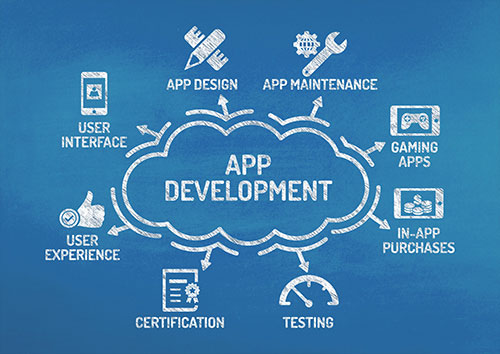iOS is the Apple-developed operating system that powers iPhones, iPads, and Apple devices.
Apple releases major updated versions of iOS annually. Its most current version, iOS 12, came out in late 2018. V12 powers about 70% of all iOS devices and v11 is still used on another 20%, the remainder using earlier versions. The adoption rate for the latest iOS release outpaced previous adoption rates. The latest version is compatible with all 64-bit devices and apps. Version 11 remains compatible for devices though 32-bit devices such as the iPhone 5c and iPad Mini use older versions.
Apple released the iOS SDK in 2008, which made it possible for developers to submit their applications written in Swift (recommended) or Objective-C to the curated Apple’s App Store. Most recently, Apple released interactive Swift, which allows quick play and better workflow management. For those who want to build cross-platform apps, developers may employ frameworks like React Native.
Technology & Development
The default developer environment is Xcode with the support of Swift & Objective-C, which includes everything required for developing apps for iPhones, iPads, Macs, Apple Watches, and Apple TVs. They offer Quick Looks to view code and Timeline Assistants to predict app performance over time. They over their package manager for executables and libraries, the LLDB debugging console, a powerful memory debugger, and runtime issues alerts, which can even alert you to memory leaks.
Developing in Swift
When Swift appeared in 2014, it quickly topped GitHub statistics for new watchers per repository and took third place for new forks per repository. Swift became open-sourced under the Apache 2.0 license in December 2015, allowing anyone to earn the right to lead an area of Swift language development.
Swift is a general-purpose language useful for creating everything from systems programming to mobile and desktop apps, and even for cloud services. It is safe, with a low tolerance for undefined behavior, fast, with a consistent and predictable performance that is intended to rival that of C, C++, and Objective-C, and expressive, with a programmer-friendly syntax and modern features. It is also interoperable, as needed with Objective-C and C languages.
Like many modern languages, Swift also incorporates elements from both Object-Oriented and Functional programming paradigms. Some of its most important parts are closures with function pointers, tuples and multiple return values, generics, structs with a method, extension, and protocol support, advanced control flow, maps, filters, and more.
Having been designed to be safer than C-based languages, it provides automatic memory management and array and integer overflow checks. It does not allow nil objects. Where those would be necessary, however, it provides options, which, put simply, demand you declare to the compiler that you know what you are doing.
The most complete support for Swift is offered on Apple platforms, but building Swift libraries and applications is also possible in Linux, where the Swift compiler and standard library, REPL, debugger, and core libraries are offered.
Developing in React Native
Contrary to many other cross-platform options, React Native lets you build a real mobile app, indistinguishable from an app built with the platform’s native technology. It uses the same UI building blocks, the only difference being that the programmers use JavaScript and React to bring them together. As JavaScript is not a compiled language, it also offers a bonus perk, which is the absence of compiling. This has benefits like hot reloading with state preservation. Finally, React Native can also interface with native components written in native platform languages such as iOS, making it another option for iOS apps.
Conclusion
iOS is one of the two of the world’s most popular mobile platforms. Successful mobile applications should also target Apple iOS. Our programmers will guide your business through a variety of choices for your app development. Our experts can handle any of them to give you an edge over your competition.


























